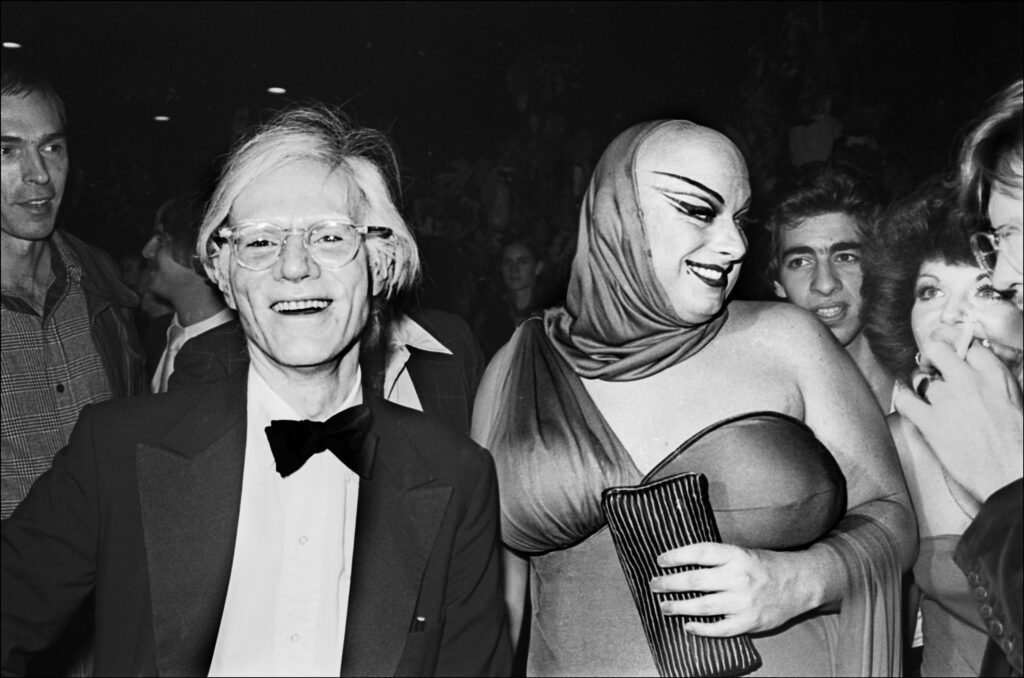Andy and Divine
Other photos below are by Allan Tannenbaum from his book New York In The 70s and are not work safe . . .
Long before you heard it, you could feel it – a throbbing, pounding beat that seemed to pulse through walls and vibrate in the air as it echoed out of brightly lit club entrances up from dingy stairwells past cloakrooms. Then you heard that unmistakable sound, a ‘four-on-the-floor’ bass drum thump, thump, thump, thump, pushed through a bank of state-of-the-art speakers that grew even louder as you inexorably moved towards its increasingly eardrum-shattering source. That’s when the evocative multi-coloured light shapes hit you full in the face; a giddy demi monde of human spirals captured by reflecting facets of spinning mirror globes. Gyrating flashes freeze-framed in strobe effects, swallowed up in a swirling galaxy of ultraviolet stars. Kaleidoscopic revolving puddles of the rainbow flitted from vivid intensity to deep shadow. Suddenly dry ice smoke effects engulfed you, obscuring the stiletto heels, trainers and platform shoes in a shroud of sparkling fog. Out of which the disembodied weaving crowd warmly beckoned you into their swaying, sweating midst and the room became a boogie wonderland pulsating with one accord. The deafening music never stopped, not for a single moment. From the second the tribal throb moved from suspended tweeters and woofers to vibrate your rib cage, it continued relentlessly until the gathering dejectedly dispersed into dawn’s early light. As Idris Muhammed sings in this superb collection, ‘Could Heaven Ever Be Like This?’
Welcome to the world of Disco, where the music has never stopped for a 70s generation it defined. Die-hard devotees who loved the atmosphere, the fun and the thrill of the circus environment so much it became the enduring soundtrack of their lives! Who came to appreciate the double irony contained in the title of the all-time classic Disco anthem ‘I Will Survive’ – when everyone who really should have known better said it wouldn’t! Who wouldn’t have been caught dead wearing the dazzling white three-piece suit or glitter boob tube of popular polyester myth! Because the soaring melodies, harmonies and tunes were so powerful, so fantastic and so epic in emotional contouring that more than thirty years after ‘Saturday Night Fever’ spawned international dance mania on a massive scale Disco is still here. Just as fashionable and even more relevant than ever as pop culture. Like The Players Association say, ‘Turn The Music Up’. Loud!

The dancefloor at Plato’s
Disco was a glamour-packed fantasy universe, a ‘Funk Encounter’ of the best kind, a reaction against the grimy and depressing reality that lay beyond the walls of your smoke-and-mirrors club cocoon. A world of sexuality and sensuality, romance and rapture, escapism and playfulness, Hollywood and hedonism – an unreal and often surreal cosmos splashed before a background of lush vocal and orchestral manoeuvres in the dark. The Disco movement, and it definitely was a movement because the community spirit it engendered became a global calling card for many acolytes, changed the way people spent their time and money, how they dressed and lived. For after a decade of Beatlemania, Bubblegum, Flower Power and Glam Rock, music went from headtrip to hips and feet again as dancing took on a cultural magnitude not seen since the Depression era of the 30s.
You went to the discotheque to celebrate the good things in life and to forget the bad ones. For a couple of hours a week, or day depending on how affected you were by the all-encompassing lifestyle trend, you could let it all hang out, let the lyrical dream take hold, let your body move to the hypnotic rhythm and push out everything else. Everyone needed a little nighttime fantasy in their lives and they found its electric heartbeat on the flashing floors.
In Disco Land, bizarre costumes and exotic masquerade mingled with haute couture and celebrity chic to create a unique fashion pack milieu that was part showbiz, part café society, part carnival, part catwalk and part Twilight Zone. Beautiful People bumped into construction workers, the Jet Set mingled with suburban secretaries on the floorshow stage where none were spectators and all were players, forsaking their normal mundane responsibilities in the pursuit of pleasure, sensation and Disco dedication. It was where celebrities came to be nobodies as they anonymously mixed with the hustling throng. It was where nobodies came to enjoy the glitterati experience for a brief moment doing their spectacular thing: a dazzling step, a sexy routine, a shimmering move.
In the case of Studio 54, the undisputed Queen of Clubs in mid-town Manhattan, it was where the Divas of the day came to celebrate – anything! Like birthday girl Bianca Jagger who galloped through its baroque interior on a white stallion to become a front-page tabloid cover girl – a paparazzi first that inaugurated the famous-for-being-famous photo opportunity. Or like Liza Minnelli unwinding after a strenuous night on the Broadway stage by once more tirelessly dancing her ass off: with a host of the eminent, illustrious and notorious also Latin Hustling the night away.
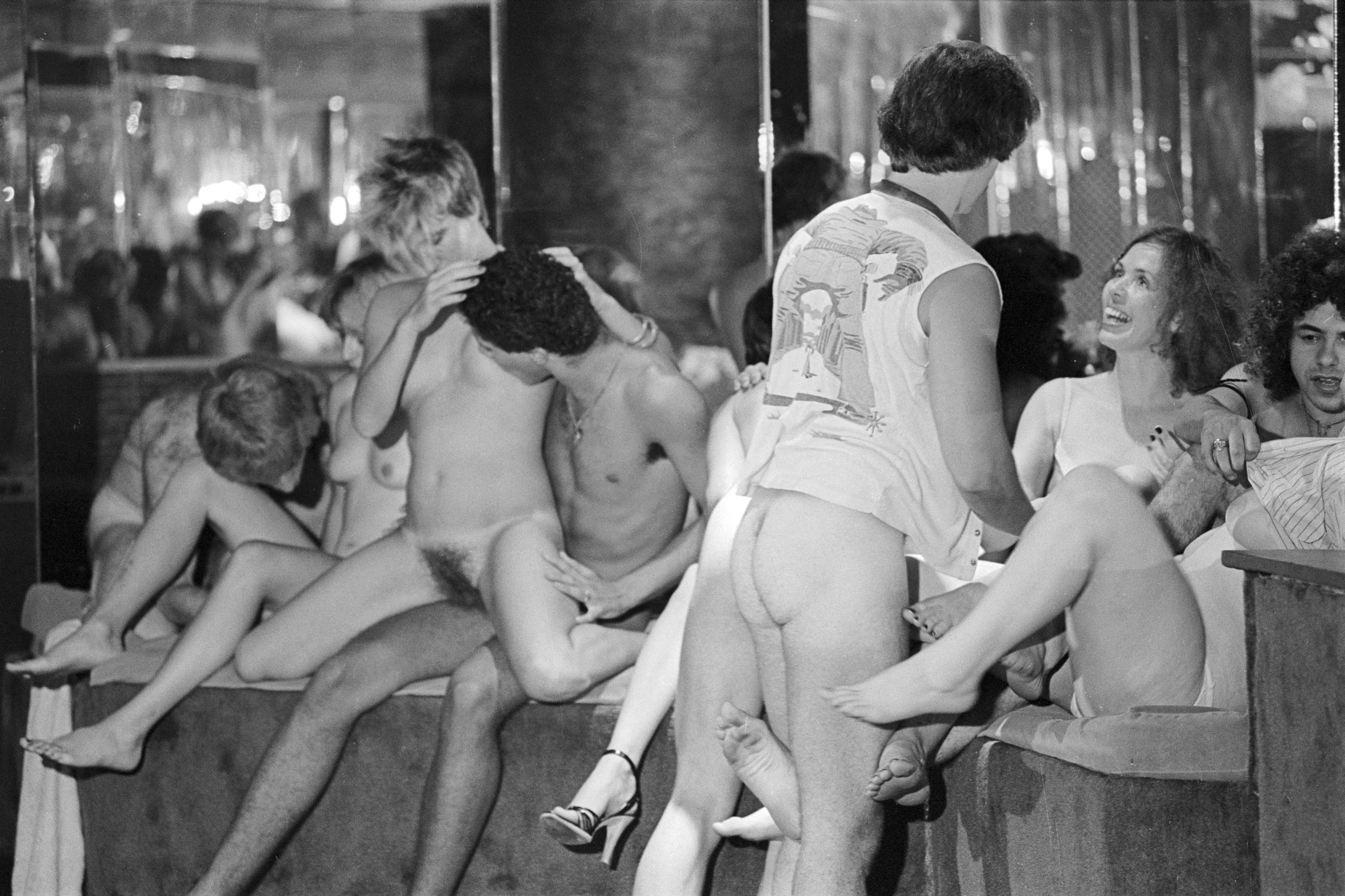
Swingers At Plato’s
Those who couldn’t get past the legendary Studio 54’s much-hated selective door policy – and velvet rope refusal could happen to anyone from office worker to royalty – took comfort in the fact that it was more than happening elsewhere. In side streets, shopping malls and alleyways all over town and especially in another blue collar New York discotheque. Across the Brooklyn Bridge 2001 Odyssey had been the setting for the blockbuster ‘Saturday Night Fever’ movie, one firing the hopes and dreams of a million John Travolta wannabes. For like their screen hero, such true disciples of the Disco gods came to dance, pure and simple. The way they moved to the tempo of the music revealed their true selves. And each move was the sensual vibe of a great lover that fascinated and fired the erotic fantasies of their onlookers. Don Ray’s ‘Got To Have Loving’ said it all.
2001 Odyssey was far more in keeping with what the global Disco tribe were used to in terms of atmosphere, floor size and dance credibility. Post the ‘Saturday Night Fever’ epidemic discotheques sprouted up everywhere. From a postage-stamp floor in a supper club or renovated loft to the vast spaces offered by a refurbished theatre or converted church, nowhere was safe from the Disco revolution. But wherever such bijou or cavernous establishments sprouted, the tie that bound them all together was the music and the erotic and exotic ambience of sensual sound stimulation.
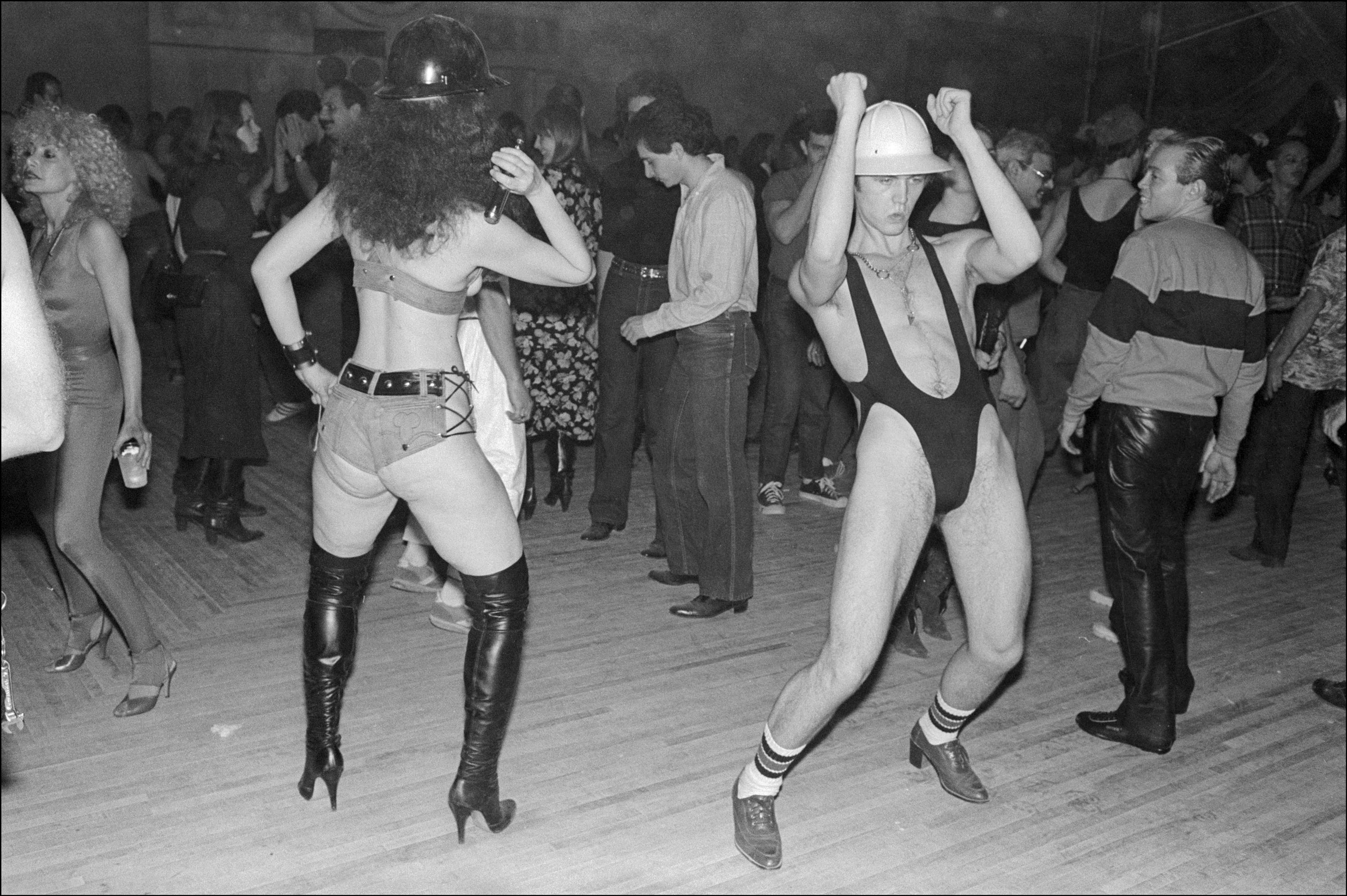
Quietus editors John Doran and Luke Turner celebrate the release of a new Los Campesinos album
Disco showed no ageist, sexist or racist bias either. Mainly because it had originated in the black, Hispanic and gay inner-city communities, during the peak Disco years every minority demographic came together in an explosion of mutual admiration and trust in the bass line. For whatever age, colour or sexual preference, everyone had one thing in common – a compelling desire to shed their inhibitions in a celebration of segued music and perpetual motion. No matter what underlying reason you had to Disco – great exercise, stress relief, fantasy trip, ego posing or social interaction – at no other time in dance history did so many participate so forcefully in a musical ethos. For Disco signalled the way ahead. For liberation and tolerance. It was a revolution, a people movement for the blissed out and one that set a hopeful blueprint for future society.
Although nascent elements can be traced back to the Tamla Motown sound of the Swinging Sixties, Manu Dibango’s Afro-Lounge stormer ‘Soul Makossa’ in 1972 is considered the very first Disco record. Some argue ‘Dance to the Music’ by Sly and the Family Stone from 1968 shows the earliest signs of the lavish percussion that would typify the genre. More lush than Soul Music, easier on the ear than hard rock, Disco weaves together a tapestry of musical styles. From Big Band swing and Broadway pizzazz, from rhythm and blues to funk, via luxurious string arrangements and sweetly sung chorals. And at the 125 beats-per-minute heart of this eclectic mix is the rhythm – an up-tempo, heavy, straight 4/4 time that goes directly to the feet to guide them like a metronome.

Dancers at Mudd Club
Disco proper took off in 1973 with ‘The Love I Lost’ by Harold Melvin and the Blue Notes, the chart topping ‘Rock the Boat’ by The Hues Corporation, ‘Love’s Theme’ by The Love Unlimited Orchestra and ‘Rock Your Baby’ by George McCrae. Philadelphia International, SalSoul, TK, Westend, Prelude, Solar, Lollipop and especially Casablanca were just some of the influential record labels that fuelled the largely urban American trend.
Until the newly syncopated sound started firing the creative juices of European composers and producers like Giorgio Moroder, Jean-Marc Cerrone, Alec R. Costandinos, Celso Valli, Jacques Fred Petrus and Mauro Malavasi. Moroder of course became one of the key architects of the popular Disco idiom with his muse Donna Summer. The equally sterling work of the still-going-strong Cerrone (Billboard magazine’s 1978 Disco Artist/Composer/Arranger of the Year) and Petrus and Malavasi are featured in this collection. The latter duo represented by both ‘Counting On Love (1 2 3)’ by The Peter Jacques Band (Jacques Petrus’ name reversed and anglicized to garner more American turntable interest) and ‘It Burns Me Up’ by Change.
Disco as a genre was also further shaped by American studio engineer Tom Moulton who pioneered the remixing and extending of a track, complete with break section, to cater to nightclub preferences. This 12-inch single format innovation was the result of Discophiles wanting the most out of their favourite songs. But the 2004 Dance Music Hall of Fame inductee was to find Disco immortality with Gloria Gaynor’s seminal ‘Never Can Say Goodbye’, the first continuous-mix album side ever, alongside MFSB, Andrea True Connection and the outré styling of model-turned-diva Grace Jones. Other remixers and DJ’s who added their unique twist to Disco included David Mancuso, Larry Levan, Nicky Siano, Shep Pettibone and Walter Gibbons. Mancuso especially, because he initiated the ‘Invitation Only’ parties to his own home that soon became known as The Loft, a concept that would eventually transform the entire DJ network and crystallize the club business model.
Contained in this collection are some of the tracks Mancuso would have played at those legendary house parties. Each spotlights the richness and diversity of Disco, something contemporary critics never acknowledged, even grudgingly. Because the Disco craze ran concurrently alongside the rise of Punk Rock, many viewed it as a very poor plastic relation to that anti-authoritarian musical rebellion. Punk’s political anger and anarchist message might have been light years away from Disco’s playful sexual innuendo and heightened romance. But its harmonious innocence, glitzy production and free spirit mirrored exactly the OTT theatrical elements that appealed to the contemporary mass market who couldn’t have cared less about the ‘No Future’ counterculture when ‘No More Tears (Enough is Enough)’ was more than enough.
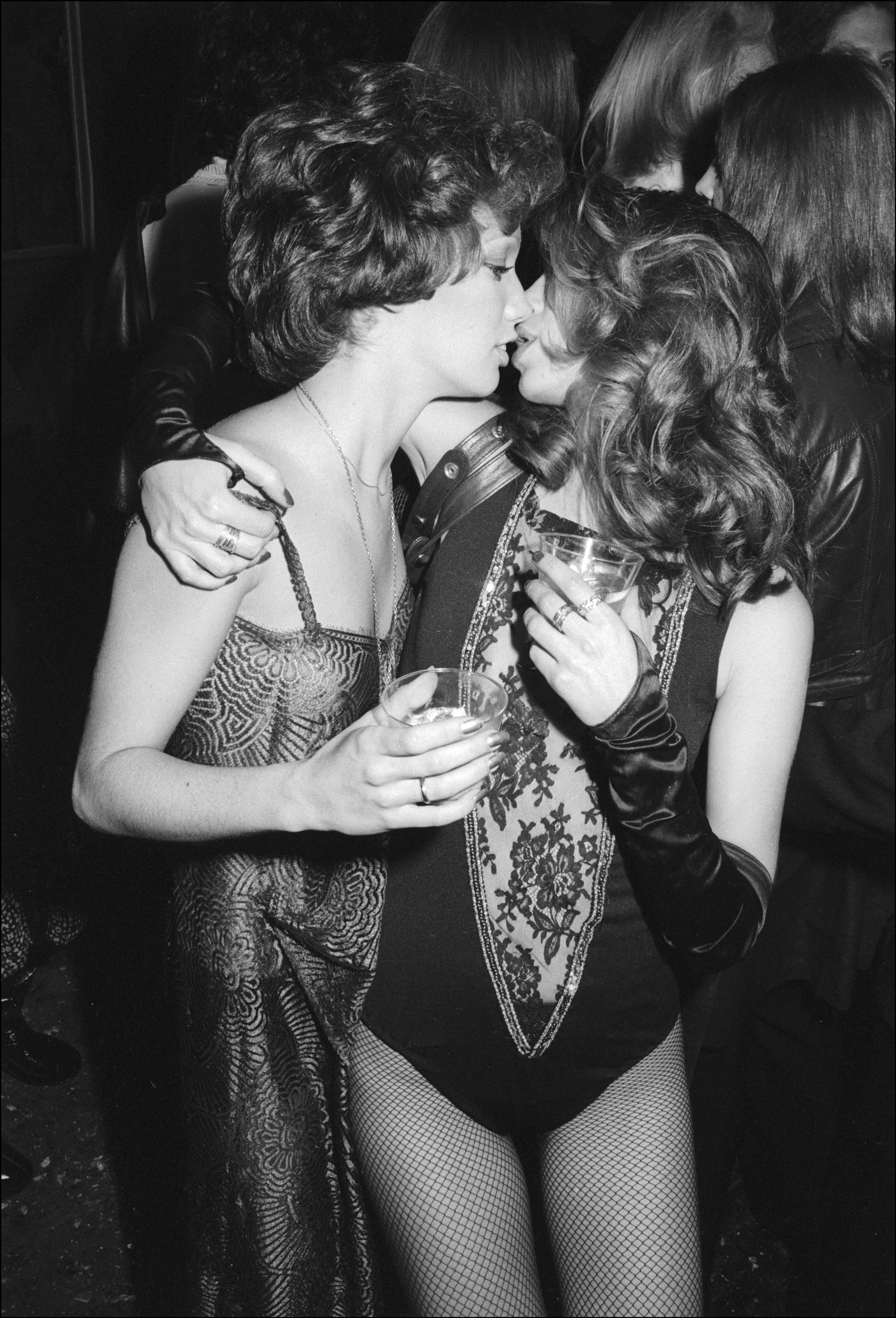
"Erotic Circus Girls"
‘What a Diff’rence A Day Makes’ by Esther Phillips is a classic example of the assorted influences Disco shuffled to form a new musical variety. Take an evergreen standard – a hit for both the Dorsey Brothers Orchestra in 1934 and Dinah Washington in 1959. Give it to one of the first vocal superstars of R&B, formerly known as Little Esther. Add the ethereal beat. Suffuse it with instrumental grandeur. Stand back well back or get crushed by the rush to the dance floor. Dr Buzzard’s Original Savannah Band followed a similar formula with their Swing-Disco chart topper ‘Cherchez La Femme’. Formed by Brooklyn brothers Stony and Thomas Browder, the latter would go on to form Kid Creole and the Coconuts under his alternative name August Darnell. There’s a nostalgic air surrounding Manhattan Transfer’s ‘Twilight Zone/ Twilight Tone’ too that doesn’t just come from its fantasy TV show homage. Stunning production values also exemplify Johnny Mathis’ ‘Gone, Gone, Gone’, one of the finest illustrations of a veteran megastar adapting his enviable skills to the Disco schematic, and creating a masterpiece of effortless sophistication and melodic craft.
The recipe for success in the Disco era was the orchestra used to create the lush background sounds. Many bands put Orchestra in their names to signify the importance of the forty or so session musicians gathered in the studios to texture even the trickiest of rhythmic structures. John Davis And The Monster Orchestra and the Constellation Orchestra were two class acts that never disappointed using strings, horns and trumpets to ensure the solo melodies of ‘Love Magic’ and ‘Funk Encounter’ built to intensified finales.
Rose Royce was already established by the movie ‘Car Wash’ when ‘Do Your Dance’ broke out. So was The Glitter Band in Britain when ‘Makes You Blind’ hit Disco pay dirt. But In the best tradition of overnight pop sensations, Gary’s Gang found themselves thrust into the highest echelons of success with ‘Keep On Dancing’. As did Cheryl Lynn who took her discovery on the television talent platform ‘The Gong Show’ all the way to the top with ‘Got To Be Real’. Grey & Hanks with ‘Dancin’’, The Bombers with ‘(Everybody) Get Dancin’’ and the Glen Adams Affair with ‘Just a Groove’ also proved that if you had a memorable slice of feel-good Disco that perfectly captured the mood of the moment, you too could have a smash hit the world over.
His name might not be as familiar as Giorgio Moroder or Nile Rodgers, but two of the highlights from this collection come from the unsung hero of Disco – Boris Midney. Composer, arranger, producer, sound designer, engineer and an accomplished musician in his own right, the Soviet Union defector created a marriage of music and technology that yielded breathtaking delights. The sparsely ethereal space effect he shaped between gorgeous vocals, wild percussion and roving strings formed uniquely experimental Disco landscapes. ‘Thanks For Loving Me’ by Double Discovery (originally recorded in 1982 but not released until 2000) and ’Livin’ Up To Love’ by Companion, two of his many signature studio bands (others included USA-European Connection and Masquerade), are exemplary delves into luscious melody and dazzling dense harmony driven by a clean-cut beat and dizzying momentum that scale the slinky heights of incomparable Disco enchantment.
This is what the Disco phenomenon was all about. It was one that showcased the most adept and professional singers, while consistently changing with the times, keeping up to date with the latest trends in production techniques and giving rise to an unprecedented commercial saturation that revolutionized the entire recording industry. All achieved on the way to becoming one of the most enduring catalogues of music in pop history.
It’s Party Time and Classic Disco means you are all invited.
Alan Jones is the co-author of Saturday Night Forever: The Story Of Disco
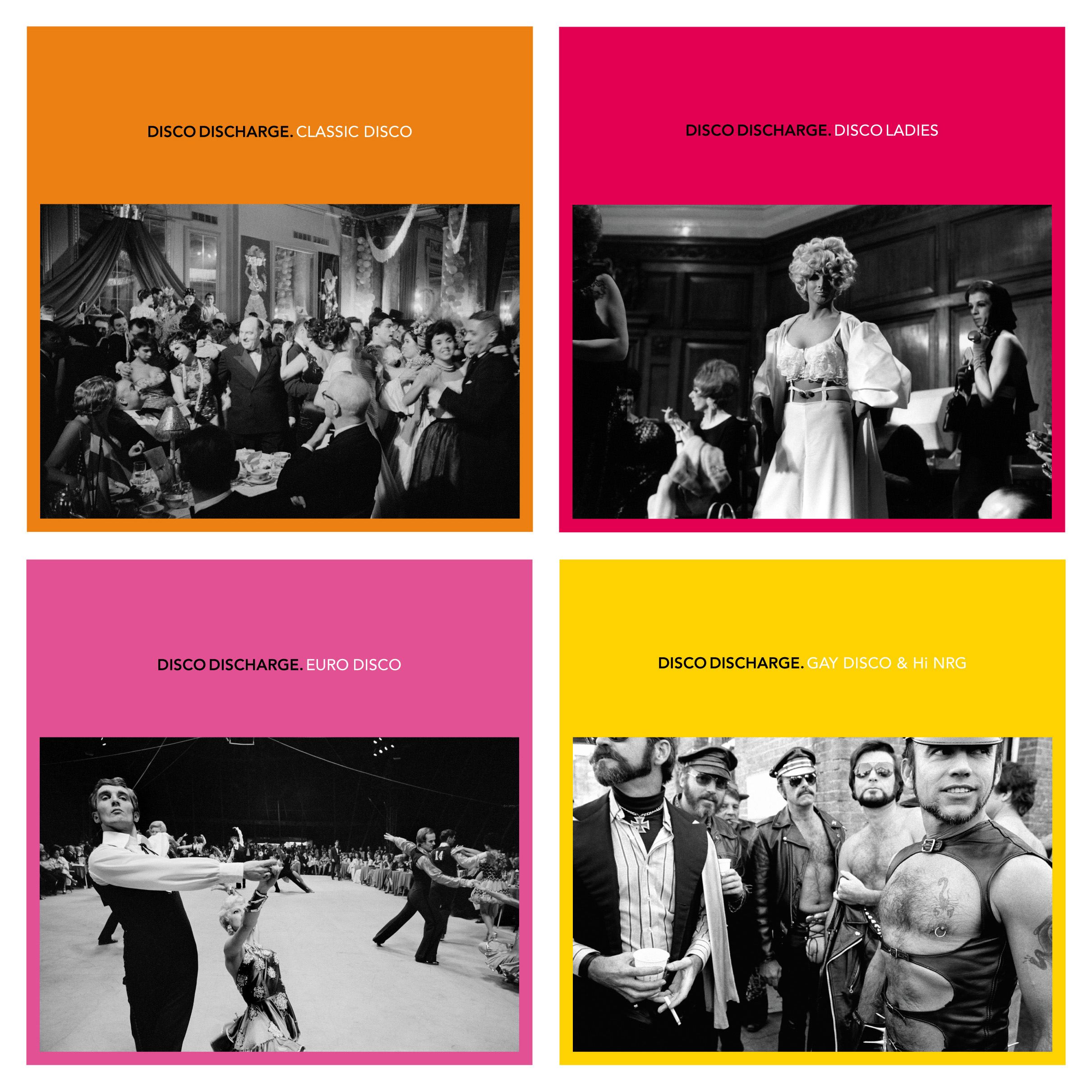
Luke Turner recommends Gay Disco & Hi Energy while John Doran recommends Euro Disco. Watch this space for reviews of the compilations which are released on September 28
Podcast: Play in new window | Download

